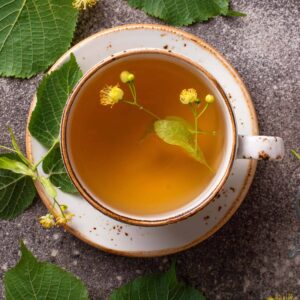Ceylon Tea
The story of Ceylon Tea

The story of Ceylon Tea begins with coffee. The coffee plant had already been found growing naturally among the approaches to the central hill country. Then British Governor Barnes threw the weight of official support behind large scale cultivation. Land in the central hills was sold for a few pence an acre, official funds were dedicated to research and experiments in coffee-growing, planters and merchants were provided with incentives and support.
Most important of all, Barnes provided the infrastructure of a network of roads, including the all Important trunk route from Kandy to Colombo – that enabled coffee planters to get their produce to town, and then to market in England. In the 1870s, coffee plantations were devastated by a fungal disease called (Hemileia vastatrix) or coffee rust, better known as “coffee leaf disease” or “coffee blight”. The death of the coffee industry marked the end of an era when most of the plantations on the island were dedicated to producing coffee beans. Planters experimented with cocoa and cinchona as alternative crops but failed due to an infestation of Heliopolis Antonie, so that in the 1870s virtually all the remaining coffee planters in Ceylon switched to the
production and cultivation of tea. In 1824 a tea plant was brought to Ceylon by the British from China and was planted in the Royal Botanical Garden in Peradeniya for experimental purposes. Further experimental tea plants were brought from Assam and Calcutta in India to Peradeniya in 1839 through the East India Company and over the years that followed. In 1867, James Taylor marked the birth of the tea industry in Ceylon by starting a tea plantation in the Loolecondera estate in Kandy. He was only 17 when he came to Loolecondera, Sri Lanka
The original tea plantation was just 19 acres. In 1872 Taylor began operating a fully equipped tea factory on the grounds of the Loolecondera estate and that year the first sale of Loolecon dera tea was mad in Kandy.
In 1873, the first shipment of Ceylon tea, a consignment of some 23 lb (10 kg), arrived in London. Soon enough plantations surrounding Loolecondera, including Hope, Rookwood and Mooloya to the east and Le Vallon and Stellenberg to the south, began switching over to tea and were among the first tea estates to be established on the island. ea production in Ceylon increased dramatically in the 1880s and by 1888 the area under cultivation exceeded that of coffee, growing to nearly 400,000 acres in 1899. The only Ceylonese planter to venture into tea production at the early stage was Charles Henry de Soysa.British figures such as Henry Randolph Trafford arrived in Ceylon and bought coffee es tates in places such as Poyston, near Kandy, in 1880, which was the centre of the coffee cul ture of Ceylon at the time. Although Trafford knew little about coffee, he had considerable knowledge of tea cultivation and is considered one of the pioneer tea planters in Ceylon. By 1883, Trafford was the resident manager of numerous estates in the area that were switch ing over to tea production.
By the late 1880s, almost all the coffee plantations in Ceylon had been converted to tea. Similarly, coffee stores rapidly converted to tea factories in order to meet increasing demand. Tea processing tech- nology rapidly developed in the 1880s, following on from the manufacture of the first “Sirocco” tea drier by Samuel Cleland David son in 1877 and the manufacture of the first tea rolling machine by John Walker & Co in 1880 essential technologies that made realizing com- mercial tea production a reality.This realization was confirmed in 1884 with the construction of the Central Tea Factory on Fairy land Estate (Pedro) in Nuwara Eliya. As tea production in Ceylon progressed, new factories were constructed and innovative methods of mechanization introduced from England. Marshall, Sons & Co. of Gainsborough in Lincoln- shire, the Tangyes Machine Company of Birmingham, and Davidson & Co. of Belfast supplied the new tea factories with machinery, a function they continue to perform to the present.


ROYAL TOUCH GREEN BLACK FRUIT EARL GRAY TEA
Quick Links
© Created by yogeemedia All Rights Reserved




